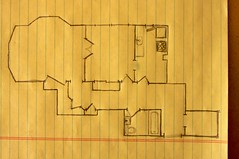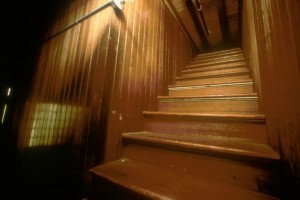Yesterday’s post spawned an interesting discussion in the comments about story questions. To be quite honest, I was familiar with the concept, but I’d never given it that much thought. I linked to a great article on story questions by my friend Annette Lyon, but our discussion also brought out a few more interesting points that I wanted to share.
The story question is the basic concept of the story. It’s asked (or hinted at) at the beginning of the story, and answered by the end. It’s the controlling, overarching action of the story.
 In a romance, it’s “Will the boy win the girl?” In a mystery, it’s “Will they catch the murderer?” (And the answer is supposed to be yes on both of those!)
In a romance, it’s “Will the boy win the girl?” In a mystery, it’s “Will they catch the murderer?” (And the answer is supposed to be yes on both of those!)
I like to think in romantic suspense, both of those are the story questions, but when it comes down to it, there can only be one—one question whose answer brings the book to a satisfying conclusion. If the hero wins the girl before he catches the bad guys, then catching the bad guys is the story question—the story would be incomplete without it. (And vice versa.) There is only one story question (the book only ends once 😉 ). However, there must be a number of intermediate goals and questions.
Make sure your story is asking and answering the same overarching question. Don’t start off asking “Can Jezebel win Horatio’s heart?” and end with “Yes, Horatio can win the Nobel Prize!” (*cough*cough*Winchester Mystery Story*cough*)
So how can you make sure you’re setting up the right story question? Let’s use Jezebel and Horatio. If we want Horatio’s quest for the Nobel Prize to be the story question—if winning the prize ends the story—then make sure it ends the book. Answer (and, most likely, ask) Jezebel’s question within the bounds of the story created by Horatio’s question. Show them getting together (or not) before they award the prize.
Another way to do this is to make one question dependent on another. If Jezebel’s quest for love is the overarching question, Horatio’s quest for the Nobel Prize should depend on her question. Maybe Jezebel did her dissertation on an obscure enzyme that’s just the breakthrough Horatio needed, but he would never know that until he looks up from his test tubes.
 A third way is to answer an intermediate question without satisfaction, making another answer (the story question) necessary. Maybe Horatio does with the Nobel Prize (because he passed off Jezebel’s work as his own, let’s say, and she is furious and leaves him and gets a lawyer). But even after he’s won, his life is empty. He misses her annotated love notes, her pocket protector, her obscure jokes. He tracks her down in her Antarctic research station, proclaims his love (and promises to publish the truth about her research).
A third way is to answer an intermediate question without satisfaction, making another answer (the story question) necessary. Maybe Horatio does with the Nobel Prize (because he passed off Jezebel’s work as his own, let’s say, and she is furious and leaves him and gets a lawyer). But even after he’s won, his life is empty. He misses her annotated love notes, her pocket protector, her obscure jokes. He tracks her down in her Antarctic research station, proclaims his love (and promises to publish the truth about her research).
Thanks to everybody who joined in the discussion yesterday—I certainly learned something. I realized that part of the problem I’ve had with a few pieces I’ve been plotting was that I was answering the wrong story question. I’ll have to find a different question to ask, or find a way to answer the question I’m already asking in the conclusion.
What do you think? Are you asking and answering the same question? How else can you make sure the right question is the story question?
Photo credits: question—Svilen Mushkatov; frustrated—John De Boer









 Last week, we discussed plotting
Last week, we discussed plotting  And since the investigation was part of my story line, I had to plot.
And since the investigation was part of my story line, I had to plot.